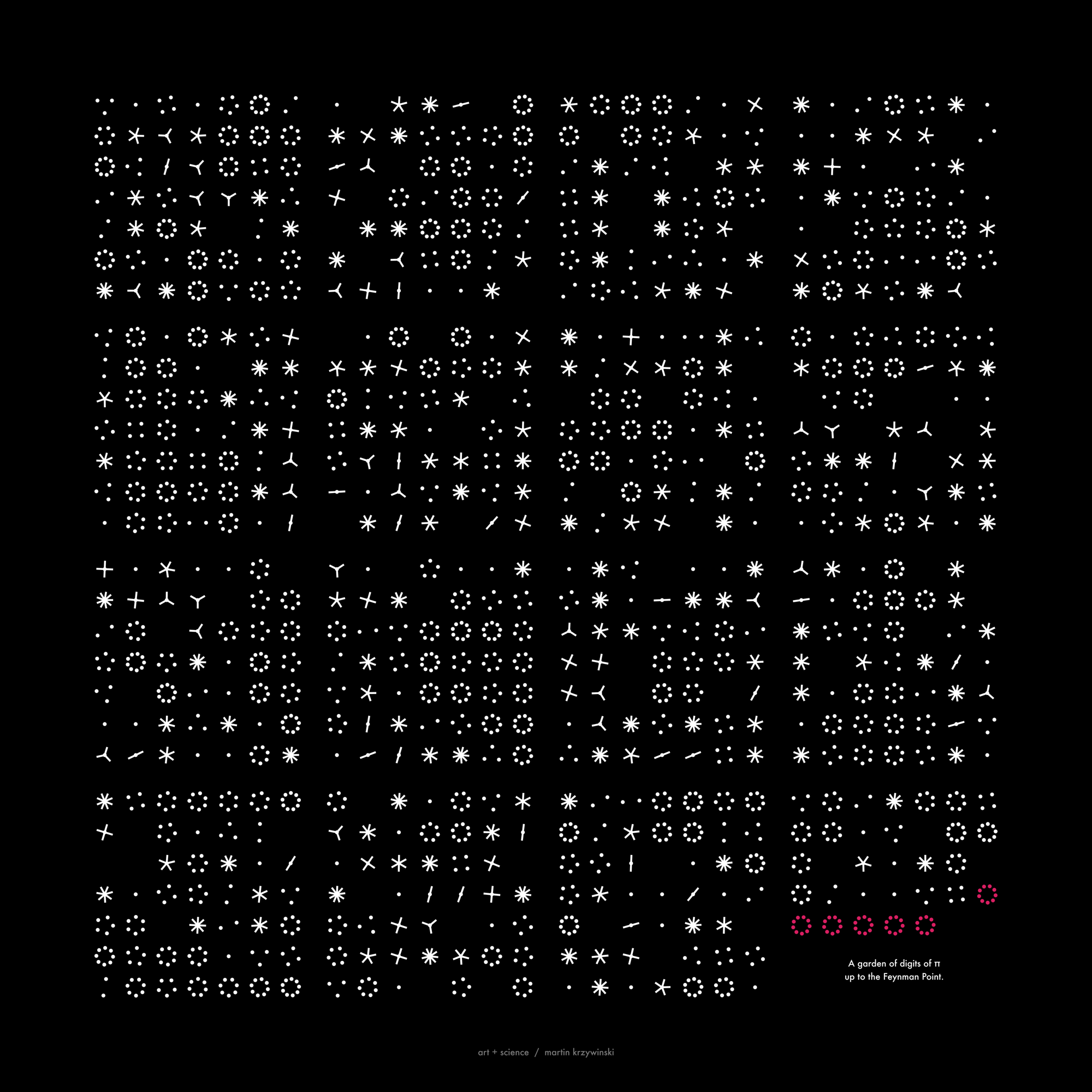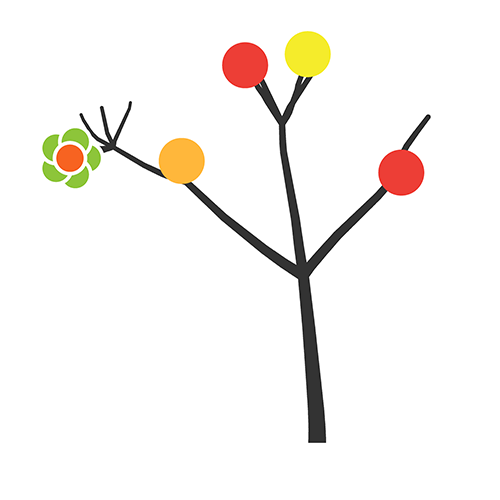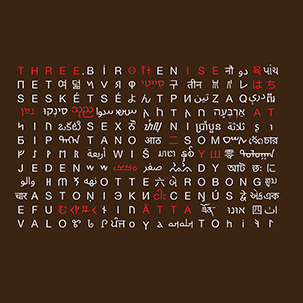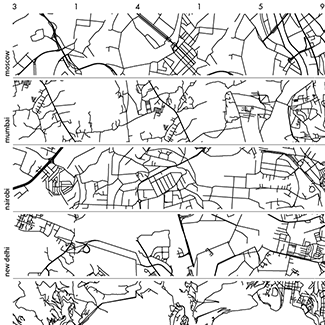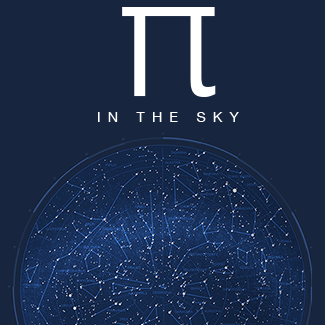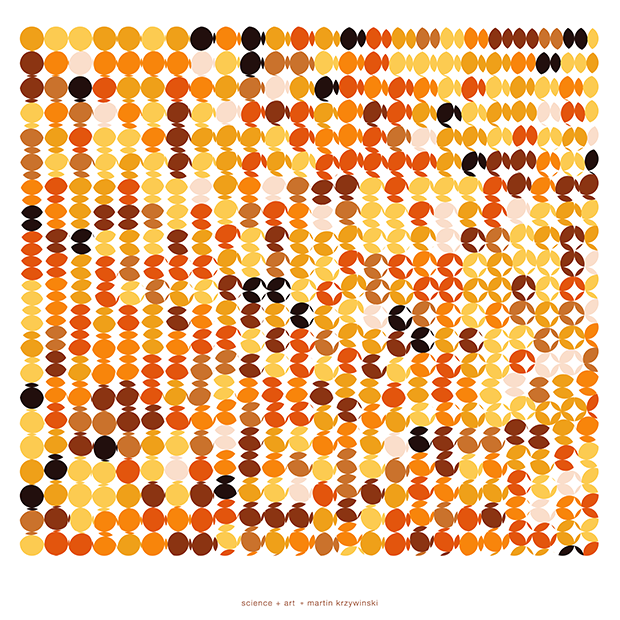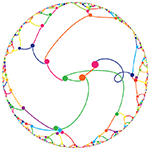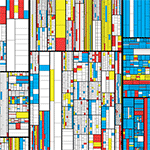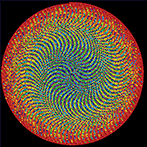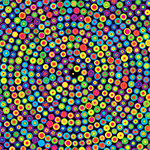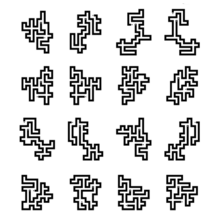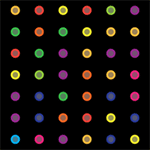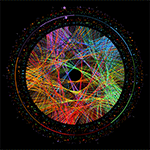`\pi` Day 2020 Art — Digits, poetically.
On March 14th celebrate `\pi` Day. Hug `\pi`—find a way to do it.
For those who favour `\tau=2\pi` will have to postpone celebrations until July 26th. That's what you get for thinking that `\pi` is wrong. I sympathize with this position and have `\tau` day art too!
If you're not into details, you may opt to party on July 22nd, which is `\pi` approximation day (`\pi` ≈ 22/7). It's 20% more accurate that the official `\pi` day!
Finally, if you believe that `\pi = 3`, you should read why `\pi` is not equal to 3.
Welcome to this year's celebration of `\pi` and mathematics. Among the chaos of CORVID-19, this year `\pi` Day celebrations are short poetic emissions I call “piku”. They are brief pauses for the time.
Start by reading how piku are constructed and then browse submitted piku. Consider participating by submitting your own piku. All you need is a pen and a few (small) words. Very therapeutic.
But if the words here don't help, immerse yourself in my coronavirus art. It's quite catching.
If you enjoy poetry and words, see how I convert spam into poems in the style of ee cummings and if you like to see words arrange on page, look through my typographic art.
You may know the haiku (俳句) as a short three line poem whose lines traditionally have 5, 7 and 5 syllables (specifically, morae or phonetic sounds).

On a recent trip to Japan I was looking to my environment for inspiration for this year's `\pi` Day. I also really wanted a scheme that would allow people to contribute to the art so that everyone could be both a participant and an audience.
After scribbling for a little bit (or a long while), I came up with the idea of a piku (`\pi`ku, パイク). Analogously to a haiku, the piku is poem whose structure is constrained. But in this case, the constraints are the digits of `\pi` itself.
The piku
The simplest piku is a 3 phrase poem with 3, 1 and 4 syllables, respectively. Perhaps the most trivial piku is just the list of digits.
Specifically, Haiku count the number of phonetic sounds which isn't always the same as syllables. For example, the word "any" has two such sounds: a-ny.
If you're interested in how the counting of sounds is done in Japanese, read about marking time and beats in Haiku.
But a more fun one would be
Longer words can be used, of course. But watch out for the lines that require a single syllable.
You can use hyphenation to work around the syllable count.
plural of piku is piku
Piku is singulare tantum—its plural form is the same as its singular.
This is because its inspiration is the haiku and in Japanese nouns do not have different singular and plural forms,
Longer piku
In general, a piku may have more than 3 lines. This reflects the fact that the digits of `\pi` do not terminate.
The endless piku is just waiting to be written. Well... started, at least.
Handling zeros
The digit zero is a line with no syllables and corresponds to a compulsory verse break. But because the first zero in `\pi` is at digit 33, you wouldn't see a verse break for a while.
Therefore, you're free to introduce a verse break anywhere in the piku (this does not use up a digit). For example,
Generalizing the piku — the nku
Any number, `n`, has its own nku. The rules for its construction are the same: each digit generates a line with corresponding number of syllables.
For example, the haiku is an nku for `n = 575`.
The year of your birth has an nku—you might want to try composing one to reflect on your origins.
In fact, any date (e.g. DDMMYYYY) can be made into an nku. This year's `\pi` date in this format is 14032020 and here's one possible nku.
The trailing zero in the number creates a verse break at the end of a poem. This can be ignored or used to generate a blank line if the poem is set with other text on the page.
Nasa to send our human genome discs to the Moon
We'd like to say a ‘cosmic hello’: mathematics, culture, palaeontology, art and science, and ... human genomes.



Comparing classifier performance with baselines
All animals are equal, but some animals are more equal than others. —George Orwell
This month, we will illustrate the importance of establishing a baseline performance level.
Baselines are typically generated independently for each dataset using very simple models. Their role is to set the minimum level of acceptable performance and help with comparing relative improvements in performance of other models.

Unfortunately, baselines are often overlooked and, in the presence of a class imbalance5, must be established with care.
Megahed, F.M, Chen, Y-J., Jones-Farmer, A., Rigdon, S.E., Krzywinski, M. & Altman, N. (2024) Points of significance: Comparing classifier performance with baselines. Nat. Methods 20.
Happy 2024 π Day—
sunflowers ho!
Celebrate π Day (March 14th) and dig into the digit garden. Let's grow something.

How Analyzing Cosmic Nothing Might Explain Everything
Huge empty areas of the universe called voids could help solve the greatest mysteries in the cosmos.
My graphic accompanying How Analyzing Cosmic Nothing Might Explain Everything in the January 2024 issue of Scientific American depicts the entire Universe in a two-page spread — full of nothing.
The graphic uses the latest data from SDSS 12 and is an update to my Superclusters and Voids poster.
Michael Lemonick (editor) explains on the graphic:
“Regions of relatively empty space called cosmic voids are everywhere in the universe, and scientists believe studying their size, shape and spread across the cosmos could help them understand dark matter, dark energy and other big mysteries.
To use voids in this way, astronomers must map these regions in detail—a project that is just beginning.
Shown here are voids discovered by the Sloan Digital Sky Survey (SDSS), along with a selection of 16 previously named voids. Scientists expect voids to be evenly distributed throughout space—the lack of voids in some regions on the globe simply reflects SDSS’s sky coverage.”
voids
Sofia Contarini, Alice Pisani, Nico Hamaus, Federico Marulli Lauro Moscardini & Marco Baldi (2023) Cosmological Constraints from the BOSS DR12 Void Size Function Astrophysical Journal 953:46.
Nico Hamaus, Alice Pisani, Jin-Ah Choi, Guilhem Lavaux, Benjamin D. Wandelt & Jochen Weller (2020) Journal of Cosmology and Astroparticle Physics 2020:023.
Sloan Digital Sky Survey Data Release 12
Alan MacRobert (Sky & Telescope), Paulina Rowicka/Martin Krzywinski (revisions & Microscopium)
Hoffleit & Warren Jr. (1991) The Bright Star Catalog, 5th Revised Edition (Preliminary Version).
H0 = 67.4 km/(Mpc·s), Ωm = 0.315, Ωv = 0.685. Planck collaboration Planck 2018 results. VI. Cosmological parameters (2018).
constellation figures
stars
cosmology
Error in predictor variables
It is the mark of an educated mind to rest satisfied with the degree of precision that the nature of the subject admits and not to seek exactness where only an approximation is possible. —Aristotle
In regression, the predictors are (typically) assumed to have known values that are measured without error.
Practically, however, predictors are often measured with error. This has a profound (but predictable) effect on the estimates of relationships among variables – the so-called “error in variables” problem.

Error in measuring the predictors is often ignored. In this column, we discuss when ignoring this error is harmless and when it can lead to large bias that can leads us to miss important effects.
Altman, N. & Krzywinski, M. (2024) Points of significance: Error in predictor variables. Nat. Methods 20.
Background reading
Altman, N. & Krzywinski, M. (2015) Points of significance: Simple linear regression. Nat. Methods 12:999–1000.
Lever, J., Krzywinski, M. & Altman, N. (2016) Points of significance: Logistic regression. Nat. Methods 13:541–542 (2016).
Das, K., Krzywinski, M. & Altman, N. (2019) Points of significance: Quantile regression. Nat. Methods 16:451–452.
Convolutional neural networks
Nature uses only the longest threads to weave her patterns, so that each small piece of her fabric reveals the organization of the entire tapestry. – Richard Feynman
Following up on our Neural network primer column, this month we explore a different kind of network architecture: a convolutional network.
The convolutional network replaces the hidden layer of a fully connected network (FCN) with one or more filters (a kind of neuron that looks at the input within a narrow window).
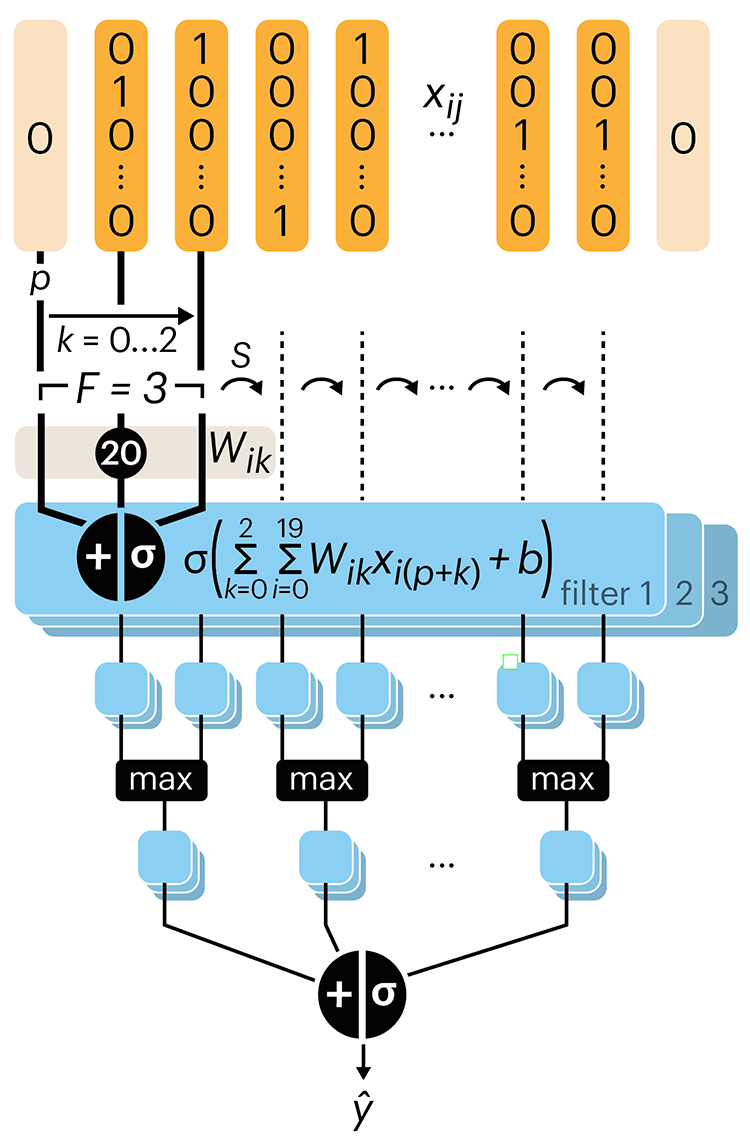
Even through convolutional networks have far fewer neurons that an FCN, they can perform substantially better for certain kinds of problems, such as sequence motif detection.
Derry, A., Krzywinski, M & Altman, N. (2023) Points of significance: Convolutional neural networks. Nature Methods 20:1269–1270.
Background reading
Derry, A., Krzywinski, M. & Altman, N. (2023) Points of significance: Neural network primer. Nature Methods 20:165–167.
Lever, J., Krzywinski, M. & Altman, N. (2016) Points of significance: Logistic regression. Nature Methods 13:541–542.

